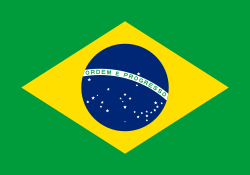Kommunikationssatellit
En kommunikationssatellit är en konstgjord satellit som befinner sig i en omloppsbana kring jorden och som används för att förmedla telekommunikation mellan stationer på marken. De används för television, telefoni, radio och datakommunikation.
För vissa system är banan geostationär, till exempel i Intelsatsystemet och Marisatsystemet. I Molnijasystemet är banan starkt elliptisk och icke-stationär, men geosynkron med två varv per dygn. Iridium är exempel på ett system med många lågflygande satelliter i banor, som varken är geostationära eller geosynkrona.
Satelliter för amatörradio
Den första amatörsatelliten som sändes upp (1961) kallades OSCAR 1. OSCAR står för ORBITING SATELLITE CARRYING AMATEUR RADIO. En radioamatör som sysslar med satelliter datorkommunicerar med satelliter som bär läsbara meddelanden i sitt minne, eller omedelbart till jorden återsänder ett inkommet meddelande.
Det enda OSCAR I kunde var att sända några korta sekvenser av bärvåg i form av morsetecknen H I. På engelska betyder HI dels ungefär hejsan eller hallå, där. På radioamatörspråk är HI det som ibland kallas det telegrafiska skrattet. Båda tolkningarna sammanslagna är ju dels litet lustigt, dels är motsvarande morsetecken ( • • • • • • ) enkla att tekniskt åstadkomma som ett fast meddelande i satellitens minne.
I senare uppskjutna OSCAR kan även dubbelriktad telegrafi (vanligast) och telefoni förmedlas. OSCAR-signalerna är svaga, och mottagning kräver avancerade antenner och radiomottagare. Kommunikationen äger rum inom för satellitkommunikation särskilt avdelade delband inom de officiella frekvensband, som enligt det internationella Radioreglementet tilldelats amatörradiotjänsten.
Idag är de vanligaste amatörradiosatelliterna s.k. Cubesats vilka är små satelliter ca. 10x10x10 (cm) stora. De är lättare att lyssna på än de tidigare OSCAR-satelliterna och numera krävs det inga stora antenner eller dyra mottagare. En intressant del att lyssna på är telemetri från satelliterna vilket innebär data från dess system.
Det har fram till början på 2000-talet byggts ca 50 amatörsatelliter. De första byggdes i garage, men verksamheten har blivit mer exklusiv och flyttat in på universiteten. Uppsändningar i rymdbana av amatörsatelliter sker genom "snålskjuts" (på engelska "piggy back") på en raket för uppskjutning av vetenskapliga satelliter. Nu (2016) är det svårt att veta exakt hur många amatörradiosatelliter det finns men det kan vara uppåt 100 - dock är inte alla dessa aktiva.
En radioamatör som sysslar med satelliter brukade förut också ta ner vädersatellitbilder men idag är det två separata hobbys.
Externa länkar
 Wikimedia Commons har media som rör Kommunikationssatellit.
Wikimedia Commons har media som rör Kommunikationssatellit.- AMSAT-SM
- RIG-Remote imaging group
Media som används på denna webbplats
MAVEN at Mars, Artist's Concept. This artist's concept depicts NASA's Mars Atmosphere and Volatile EvolutioN (MAVEN) spacecraft near Mars. MAVEN is in development for launch in 2013 and will be the first mission devoted to understanding the Martian upper atmosphere. The mission's principal investigator is Bruce Jakosky from the Laboratory for Atmospheric and Space Physics at the University of Colorado.
The goal of MAVEN is to determine the role that loss of atmospheric gas to space played in changing the Martian climate through time. MAVEN will determine how much of the Martian atmosphere has been lost over time by measuring the current rate of escape to space and gathering enough information about the relevant processes to allow extrapolation backward in time.
NASA Goddard Space Flight Center in Greenbelt, Md. manages the project and will also build some of the instruments for the mission. In addition to the principal investigator coming from CU-LASP, the university will provide science operations, build instruments, and lead education/public outreach. Lockheed Martin of Littleton, Colo., is building the spacecraft and will perform mission operations. The University of California-Berkeley Space Sciences Laboratory is also building instruments for the mission. NASA's Jet Propulsion Laboratory, Pasadena, Calif., will provide navigation support, the Deep Space Network, and the Electra telecommunications relay hardware and operations.
For more information about MAVEN, visit www.nasa.gov/maven.The Flag of Europe is the flag and emblem of the European Union (EU) and Council of Europe (CoE). It consists of a circle of 12 golden (yellow) stars on a blue background. It was created in 1955 by the CoE and adopted by the EU, then the European Communities, in the 1980s.
The CoE and EU are distinct in membership and nature. The CoE is a 47-member international organisation dealing with human rights and rule of law, while the EU is a quasi-federal union of 27 states focused on economic integration and political cooperation. Today, the flag is mostly associated with the latter.
It was the intention of the CoE that the flag should come to represent Europe as a whole, and since its adoption the membership of the CoE covers nearly the entire continent. This is why the EU adopted the same flag. The flag has been used to represent Europe in sporting events and as a pro-democracy banner outside the Union.bendera Indonesia
Flag of Iran. The tricolor flag was introduced in 1906, but after the Islamic Revolution of 1979 the Arabic words 'Allahu akbar' ('God is great'), written in the Kufic script of the Qur'an and repeated 22 times, were added to the red and green strips where they border the white central strip and in the middle is the emblem of Iran (which is a stylized Persian alphabet of the Arabic word Allah ("God")).
The official ISIRI standard (translation at FotW) gives two slightly different methods of construction for the flag: a compass-and-straightedge construction used for File:Flag of Iran (official).svg, and a "simplified" construction sheet with rational numbers used for this file.
Flag of Israel. Shows a Magen David (“Shield of David”) between two stripes. The Shield of David is a traditional Jewish symbol. The stripes symbolize a Jewish prayer shawl (tallit).
























